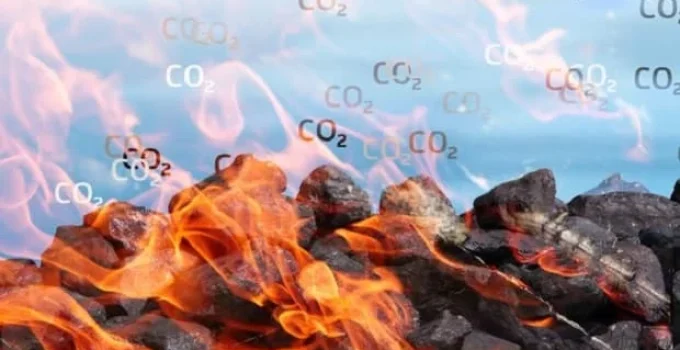Dive Deeper
- 💨 What Is Carbon Dioxide?
- 🔥 What Does It Mean for Something to Burn?
- 🧪 Why CO₂ Can’t Catch Fire
- ⚖️ The Role of Oxygen in Combustion
- 🧯 CO₂ in Fire Safety
- 🎯 Final Thoughts
- 📚 References
💨 What Is Carbon Dioxide?
Carbon dioxide (CO₂) is a gas made of one carbon atom and two oxygen atoms. It’s colorless, odorless, and all around us — in the air we breathe, in soda fizz, and in the bubbles from baking soda reactions.
But if carbon can burn, and oxygen helps things burn, why doesn’t carbon dioxide burn too?
The answer lies in chemistry: Carbon dioxide is already fully burned. That means it’s in its most stable, oxidized form, so it can’t catch fire.
🔥 What Does It Mean for Something to Burn?
To understand why carbon dioxide doesn’t burn, we first need to understand what burning, or combustion, actually is.
Combustion Happens When:
- A fuel (like wood or gasoline) reacts with
- Oxygen (O₂) in the air to make
- Heat and light (fire)
This reaction is called an oxidation reaction. It involves a substance (usually containing carbon and hydrogen) combining with oxygen to release energy.
🧪 Example Reaction:
CH₄ + 2O₂ → CO₂ + 2H₂O + energy
This shows methane burning to form carbon dioxide and water, plus energy (heat and light).
🧪 Why CO₂ Can’t Catch Fire
Here’s the key idea: You can’t burn something that’s already burned.
Carbon dioxide is the end product of many combustion reactions. In other words:
- The carbon has already reacted with oxygen.
- It’s already in a stable chemical form.
- There’s no more energy to release by burning it again.
In fact, CO₂ is non-flammable. That means:
- It doesn’t catch fire.
- It doesn’t support other things burning.
- It can even be used to put fires out.
📌 Quick Fact: CO₂ is what you get after burning things like wood, oil, or gasoline. It’s the ash of gases — chemically speaking.
⚖️ The Role of Oxygen in Combustion
Let’s look at how oxygen helps things burn — and why too much of it leads to carbon dioxide.
Burning Happens in Stages:
| Stage | Substance Formed | Burnable? |
|---|---|---|
| 1 | Carbon (C) + O₂ → CO (carbon monoxide) | Yes |
| 2 | CO + O → CO₂ (carbon dioxide) | No |
In the first stage, carbon makes carbon monoxide (CO). This can still burn because it’s not fully oxidized.
In the second stage, CO becomes CO₂, which is fully oxidized and no longer flammable.
So CO₂ is the final stop in the burning process. It’s like a candle that’s already burned down — there’s nothing left to light.
🧯 CO₂ in Fire Safety
Because carbon dioxide doesn’t burn and removes oxygen from the air, it’s a great tool for putting out fires.
That’s why CO₂ is used in:
- 🔥 Fire extinguishers — especially for electrical or liquid fires
- 🧪 Lab safety equipment — to stop flames without damaging sensitive tools
- 🚫 Fire suppression systems — in computer rooms or engine spaces
📈 Stat Box: According to the National Fire Protection Association, CO₂ extinguishers are effective on Class B and Class C fires, meaning flammable liquids and electrical equipment [1].
Here’s how it works:
- CO₂ is sprayed onto the fire.
- It displaces oxygen (starving the flame).
- It also cools the area as it expands (dry ice effect).
🎯 Final Thoughts
So, why doesn’t carbon dioxide burn? Because it’s already fully oxidized — it has no more chemical energy to give. CO₂ is a stable compound that forms after something burns, not before. In fact, it’s so stable that we use it to put out fires, not start them.
Understanding this helps us see how chemical reactions work and why certain substances behave the way they do. Not everything that has carbon can catch fire — it depends on the chemical bonds and whether there’s still energy to release.
📚 References
- National Fire Protection Association (NFPA). “Fire Extinguisher Types.” https://www.nfpa.org
- Britannica. “Carbon Dioxide – Properties and Uses.” https://www.britannica.com/science/carbon-dioxide
- U.S. Chemical Safety Board. “Carbon Dioxide Safety in Laboratories.” https://www.csb.gov
- LibreTexts Chemistry. “Oxidation and Combustion Reactions.” https://chem.libretexts.org
